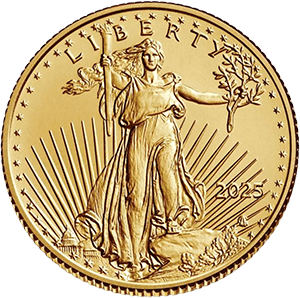
Long before silver was measured by the ounce, it was measured by its purity of spirit.
In ancient legend, silver wasn’t just a currency — it was a cure. The same shining metal that forged coins and chalices was believed to repel darkness itself. From Eastern European vampire hunters to the crypts of New Orleans, silver gleamed as both protection and power — a sacred metal that bridged myth and material wealth.
And as strange as it sounds, the history of silver’s mystical properties may hold lessons for modern investors.
1. The Purity of Silver — and the Fear of the Impure
Silver’s reputation as a holy metal dates back millennia.
The ancient Greeks believed it purified the blood. Medieval Christians used silver chalices to symbolize purity in worship. In folklore, its incorruptibility made it the enemy of corruption — literal or spiritual.
When vampire legends spread across Eastern Europe, the idea that silver could repel evil came naturally. A silver bullet didn’t just pierce the undead — it purified the sin. A silver crucifix didn’t just ward off demons — it reflected the light of truth.
Even science lent weight to the myth. Silver’s antimicrobial properties made it a real-world protector: silver coins were once dropped into milk and water to prevent spoilage, and silver nitrate was used as medicine. The line between science and sorcery blurred — and silver became the metal of faith and function.
2. Coins for the Dead — and the Price of Passage
The connection between silver and the afterlife runs deep.
Ancient Greeks placed silver coins over the eyes or in the mouths of the dead — payment to Charon, the ferryman of souls. Romans buried their elites with silver rings, mirrors, and amulets. In Jewish and early Christian traditions, silver symbolized redemption and forgiveness — as in the infamous 30 pieces Judas received.
In the folklore of Central and Eastern Europe, villagers buried suspected vampires with silver coins in their mouths — not to pay their way, but to ensure they stayed buried. The metal’s purity, it was believed, sealed the grave.
Even in New Orleans’ voodoo traditions, silver was considered a charm against “evil energy” and spiritual corruption. Worn as jewelry or hidden in pockets, it represented clarity, protection, and balance — an energy still carried by the silver coins investors hold today.
3. Vampires, Werewolves, and the Silver Standard
As vampire lore crossed into literature and film, silver became Hollywood’s favorite weapon.
The Dracula tales of the 19th century and early cinema like The Werewolf (1913) transformed a centuries-old folk remedy into cinematic mythology. Silver bullets, mirrors, crucifixes, and even chalices became cultural shorthand for truth versus darkness.
But in the real world, silver was waging a different kind of battle — one for financial purity.
In the 1800s, the “Silver Standard” underpinned global trade, anchoring national currencies. It represented stability, truth, and the tangible — the very qualities that stories claimed made it deadly to monsters.
When the world moved toward paper promises and central bank manipulation, silver’s reputation as an honest, incorruptible metal only grew stronger. Like its folkloric roots, it remained the safeguard against unseen forces.
4. From Superstition to Strategy: Silver as Modern Protection
It’s tempting to dismiss the old vampire myths as superstition — but beneath the folklore lies a metaphor modern investors should not ignore.
In every age, silver has represented defense against decay.
-
Against plague: it kept milk, water, and wounds pure.
-
Against corruption: it was the metal of justice and redemption.
-
Against deception: it was honest money, immune to inflation’s bite.
Today, the same logic applies — only the monsters have changed.
Instead of vampires, we face inflation, currency debasement, and digital illusions of wealth. Silver, like gold, remains a tangible, incorruptible shield — one that doesn’t depend on algorithms, politics, or the next election cycle.
5. The Modern Vampire’s Choice: Silver or Smoke?
Imagine two investors under a blood-red moon.
One clings to paper promises — fiat currency, bonds, and bank balances that vanish when rates rise. The other holds silver: dense, real, and eternal.
When the night of volatility falls — when fear grips markets and central banks falter — which portfolio survives the bite?
History suggests the answer is clear. Silver endures because it’s more than an asset. It’s a symbol — of purity, truth, and protection. The very traits once said to drive back vampires are the same that drive investors toward tangible metals today.
A Light Against the Darkness
Silver’s story is one of transformation — from superstition to science, myth to market. It has been medicine, money, and myth all at once — a reminder that true value doesn’t fade, even under centuries of shadow.
So whether you keep silver for its shine, its history, or its hedge, remember: it has always stood for protection — from the monsters of legend and the uncertainties of our own age.
When fear prowls in the dark, silver still shines.












